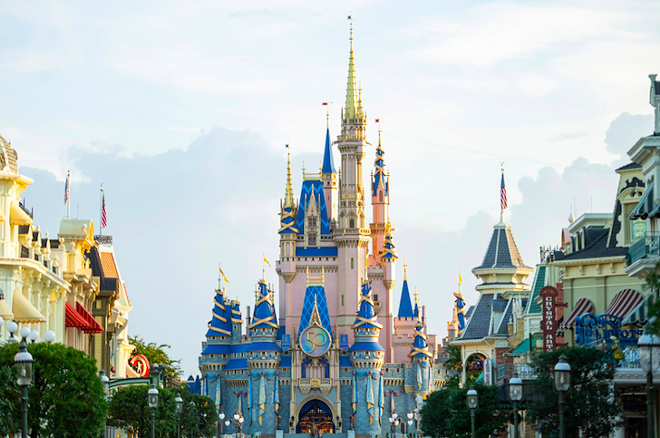Photo courtesy Walt Disney World/Facebook
A combination of a slowing post-pandemic travel boom, scorching weather, inflation and political tension has made for a decrease in attendance at Florida’s theme parks.
In the last few weeks, Disney, Comcast (Universal’s parent company) and SeaWorld Entertainment all shared quarterly earnings for the months of spring through early summer.
While all three companies continue to report gains in revenue, they also saw drops in attendance at their Florida parks.
At Disney, the Parks, Experiences and Products segment saw a 13% increase in revenue. Disney’s international parks saw the biggest surge, with a 94% increase in revenue for the quarter.
Disney’s domestic parks reported just a 4% increase in revenue year over year, with modest increases at Disneyland Resort in California. In Florida, the company reported lower attendance and less people staying at the hotels last quarter.
“We saw softening performance at Walt Disney World from the prior year, coming off our highly successful 50th anniversary celebration,” CEO Bob Iger said during Aug. 9 investor call.
Iger pointed to post-COVID demand leveling off in the state as well as the U.S.’s strong dollar “tamping down international visitation.”
Still, Disney reported operating “well above pre-COVID levels” with adjustment for $100 million in accelerated depreciation this quarter for the upcoming closure of the Star Wars: Galactic Starcruiser. Another $150 million in accelerated depreciation for the two-day resort experience will come next quarter.
Up the road from Disney, Universal Orlando Resort posted lower revenue while still operating above pre-pandemic levels, according to Comcast executives.
Comcast’s parks division, under NBCUniversal, reported record profitability of $833 million with adjusted EBITDA (earnings before interest, taxes, depreciation and amortization).
The parks segment also saw a 22% increase in revenue compared to the same quarter in 2022.
According to Comcast executives, the biggest drivers of growth were Universal’s Beijing and Japan parks, as well as the success of Super Nintendo World in Universal Studios Hollywood.
As for SeaWorld, the company reported a 2% decrease in attendance compared to the same quarter last year. And for the first six months of the year, SeaWorld’s parks attendance was down 1.5% from 2022.
During the company’s earnings presentation, CEO Marc Swanson pointed to weather and construction delays for the decrease in attendance.
“Some combination of unusually hot and cold weather, rain and/or the fallout from Canadian wildfires impacted most of our markets during the quarter,” Swanson said.
During the quarter, SeaWorld and Busch Gardens parks opened new rides in Orlando, San Diego, Williamsburg and Virginia. SeaWorld San Antonio also has a new water coaster coming soon.
While these revenue and attendance results were for roughly for April, May and June, Central Florida’s theme parks have been going through a bit of a summer slump.
Throughout the usually packed summer season, videos have popped up on social media showing much thinner crowds at Disney World and Universal Orlando. And according to Thrill Data, which tracks park wait times, Florida’s theme parks have been experiencing shorter average wait times since the beginning of the year.
Pinpointing the reasons for a slower busy season at the theme parks isn’t an exact science. Overall, there is data pointing to a slowdown in post-pandemic tourism overall as well as specifically in Central Florida.
According to the Orange County Comptroller, tourist development tax collections were down 7.3% in June compared to last year. June 2023 was the third month in a row that reported a year over year decrease.
While the rise in inflation has been slower than expected in recent months, the costs to visit a theme park are still incredibly high — what with $100-a-day tickets, food and gas prices, and the pressure to fork over still more money to avoid long lines.
Beyond that, news outlets and theme park blogs point to record-breaking heat waves in Florida and throughout the South, along with Gov. Ron DeSantis’ political agenda as reasons for keeping travelers from the theme parks.
The NAACP, the Human Rights Campaign and the League of United Latin American Citizens have all issued “travel advisories” for the state of Florida because of recent legislation that harms minority groups and the LGBTQ community.
Still, it’s hard to track data that definitively shows a cause and effect relationship between low theme park attendance and Florida’s political climate.
Subscribe to Orlando Weekly newsletters.
Follow us: Apple News | Google News | NewsBreak | Reddit | Instagram | Facebook | Twitter | Or sign up for our RSS Feed

